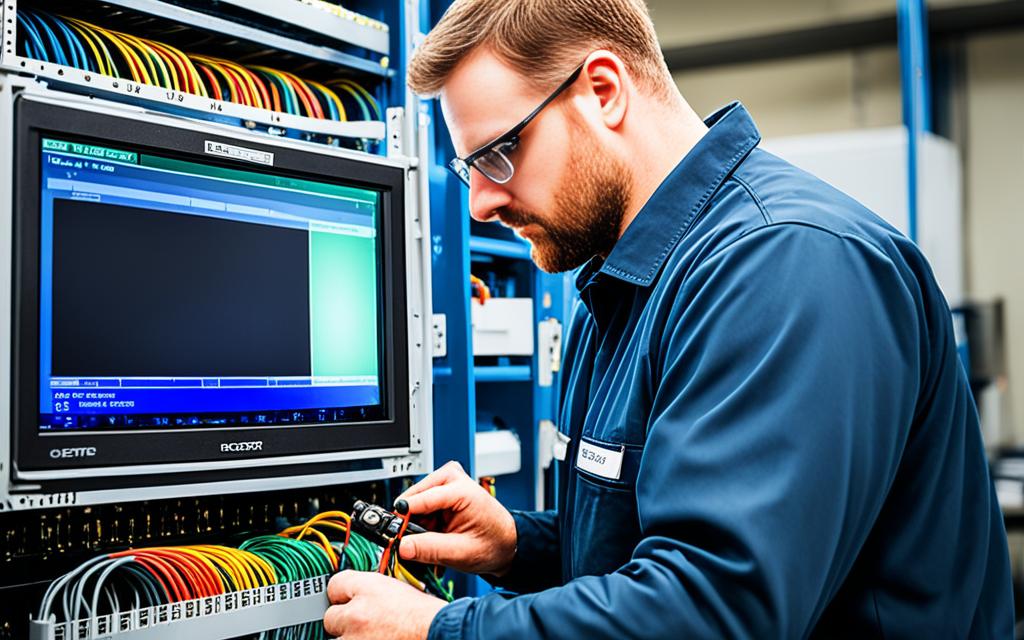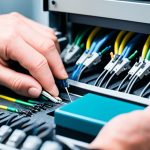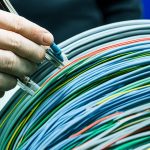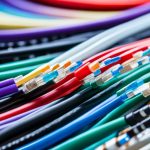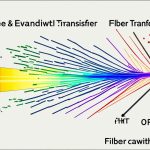Accurate testing and measurement are crucial in fiber optic networks to ensure reliable and high-performance connectivity. The precise measurement of fiber optic cables involves determining the accuracy of the measurements made and the precision of the measurement process.
Understanding the terminology and standards used in the industry is essential for accurate testing. Various tests are available for fiber optic cables, each serving a specific purpose. Accurate testing not only saves costs but also improves customer satisfaction by ensuring that no good cables are rejected and no faulty ones are missed.
Accurate Fiber Optic Cable Testing
Accurate testing of fiber optic cables is crucial for ensuring the reliability and performance of the network. Accurate measurements provide values that are close to the “real” value of the cable. This requires understanding the terminology of accuracy and precision, as well as the uncertainty associated with measurements. Industry standards and guidelines help ensure accurate testing practices. Contractors and installers must have the proper tools, knowledge, and calibration to perform accurate tests efficiently.
Accurate testing prevents the rejection of good cables and the need for costly repairs or callbacks. To ensure accurate testing, various factors need to be considered:
- The use of high-quality testing equipment that meets industry standards.
- Calibration of testing equipment to ensure accurate measurements.
- Knowledge of the testing procedures and standards established by industry organizations.
- Understanding the terminology related to accuracy, precision, and uncertainty in fiber optic cable testing.
- Maintaining proper documentation of test results for future reference and analysis.
By adhering to these practices, contractors and installers can minimize the risk of faulty installations and ensure the reliable performance of fiber optic networks. Accurate testing prevents the rejection of good cables, which saves both time and money. It also eliminates the need for costly repairs or callbacks, improving customer satisfaction and maintaining the reputation of the network provider.
Accurate testing of fiber optic cables is essential for network reliability and performance optimization. By ensuring precision and accuracy in testing practices, network providers can deliver reliable and high-performing connectivity to their customers.
In addition to accurate testing, ongoing monitoring and maintenance of fiber optic networks are crucial to identify and rectify any issues that may arise over time. Investing in accurate testing practices ultimately leads to long-term cost savings, improved network performance, and enhanced customer satisfaction.
The Benefits of Accurate Fiber Optic Cable Testing
Accurate testing of fiber optic cables provides several benefits:
- Reliable Network Performance: Accurate testing ensures that fiber optic cables are properly installed and able to transmit signals without interference or loss, resulting in reliable network performance and consistent data transmission.
- Cost Savings: Accurate testing helps identify and rectify any faults or defects in the cable during installation, preventing the rejection of good cables and the need for costly repairs or callbacks in the future.
- Enhanced Customer Satisfaction: Reliable network performance and minimal downtime due to accurate testing lead to improved customer satisfaction, which is crucial for network providers to retain and attract customers.
Therefore, accurate testing of fiber optic cables is an essential step in ensuring the reliability, functionality, and performance of fiber optic networks.
Essential Tests for Fiber Optic Cables
All fiber optic cables undergo essential tests to ensure their functionality and performance. These tests include continuity testing, end-to-end connection testing, and loss testing. By conducting these tests, installers and contractors can identify and resolve any faults or issues in the cables, ensuring their proper functionality.
Continuity testing is crucial to ensure that there are no breaks or interruptions in the fiber optic cable. It verifies the continuity of the electrical connection from one end of the cable to the other, ensuring the seamless flow of signals.
End-to-end connection testing is performed to verify the accuracy and integrity of the connections between the fibers in the cable. This test ensures that the connections are properly aligned, minimizing signal loss and maximizing performance.
Loss testing measures the amount of signal loss in the fiber optic cable, which can occur due to various factors such as splices, connectors, and fiber attenuation. This test helps assess the overall performance and quality of the cable, ensuring that the signal loss is within acceptable limits.
There are different methods available for conducting these tests, depending on the installation type and requirements. Insertion loss testing with reference cables or Optical Time Domain Reflectometer (OTDR) testing are commonly used methods for testing fiber optic cables.
Insertion Loss Test Method:
| Test Method | Advantages | Disadvantages |
|---|---|---|
| Insertion Loss Testing with Reference Cables | Provides accurate and precise measurements of the cable’s loss | Requires the use of reference cables and may be time-consuming |
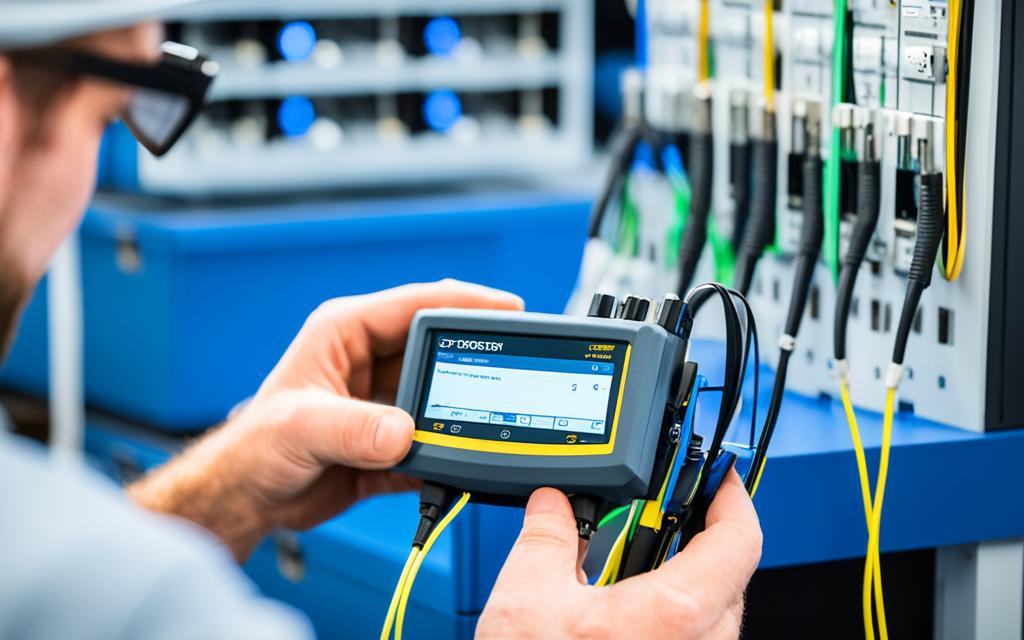
Using reference cables provides a known loss value against which the tested fiber optic cable is compared. This method ensures accurate and precise measurement of the cable’s loss. However, it requires the use of reference cables, which can be time-consuming. The insertion loss test method is commonly used for testing fiber optic cables in various installations.
Overall, conducting essential tests for fiber optic cables is crucial to ensure their continuity, proper connections, and optimal performance. These tests help identify any faults or issues in the cable and ensure its reliable functionality in the network.
Fiber Optic Testing in Outside Plant Cables
When it comes to Outside Plant (OSP) cables, specific testing procedures are required to ensure their reliability and performance. OSP cables are typically long-distance singlemode cables that are installed in shorter sections, usually ranging from 5 to 12 kilometers. These cables may have splices and connections that need to be verified to guarantee their integrity.
During the installation process of Outside Plant cables, one commonly used testing method is Optical Time Domain Reflectometry (OTDR). This test is used to verify the accuracy of the splices by analyzing the backscattered light and identifying any potential issues or anomalies.
Additionally, end-to-end insertion loss testing with reference cables is performed after the installation of Outside Plant cables. This test measures the amount of signal loss in the cable and ensures that it falls within acceptable limits.
In certain cases, long-distance cables may require additional testing for chromatic dispersion or polarization-mode dispersion. Chromatic dispersion refers to the spreading of different wavelengths of light as they travel down the fiber, while polarization-mode dispersion involves the differential delay of light in different polarization states. Both of these factors can impact the performance and reliability of the fiber optic network.
Accurate testing of long singlemode fibers depends on various factors, including attenuation, wavelength stability, and differences in fiber backscatter at splices. By conducting thorough and precise testing, network operators can identify and address any potential issues that may affect the performance of their Outside Plant cables.
Fiber Optic Testing in Premises Cables
Premises cabling systems, such as those used for LAN backbones and fiber-to-the-desk applications, require specific tests to ensure their quality and functionality. Proper testing of premises cables is crucial to validate their performance and adherence to industry standards. Two essential tests for premises cables are connection verification and insertion loss testing.
Connection verification testing is performed to confirm the proper connection between transmitter and receiver fibers. This test ensures that the signal is transmitting correctly through the cable and that there are no faulty or misaligned connections. It is crucial to verify the connection integrity to maintain optimal network performance.
Insertion loss testing is another critical test for premises cables. This test measures the amount of signal loss that occurs when the cable is connected in the network. To perform this test, a test source and an optical power meter are used. The test source sends a known signal through the cable, and the optical power meter measures the power received at the other end. By comparing the transmitted and received power levels, the insertion loss can be calculated. This information is crucial for assessing the cable’s performance and ensuring that it meets the required standards.
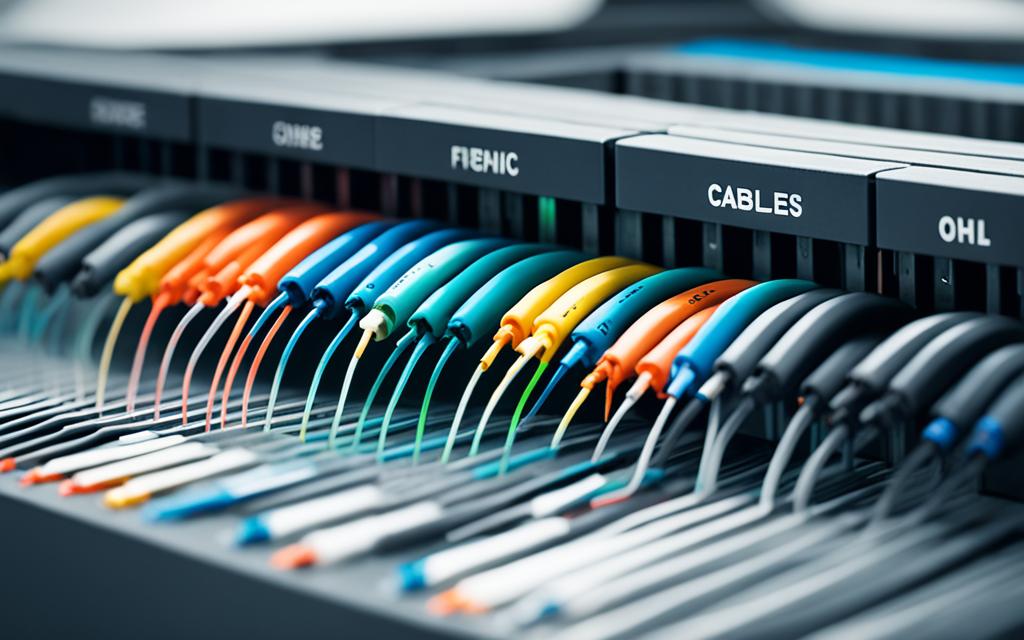
In addition to connection verification and insertion loss testing, OTDR (Optical Time Domain Reflectometer) testing can also be used for premises cables. This testing method provides more detailed information about the cable’s characteristics, such as the length, losses, and any potential faults or breaks. OTDR testing uses pulses of light to measure the attenuation and reflectivity along the cable. It helps identify the exact location of any issues and provides valuable data for troubleshooting and maintenance activities.
Proper documentation and adherence to industry standards are crucial for effective premises cable testing. The results of the tests should be accurately recorded and interpreted to ensure the cable’s reliability and performance. Understanding the measurement techniques and interpreting the results correctly are essential for efficient testing and maintenance of premises cables.
Importance of Fiber Optic Testing
Fiber optic networks play a crucial role in providing reliable and high-speed communication. As the demand for bandwidth increases, these networks are becoming larger and more complex. To ensure their performance and reliability, fiber optic testing is essential.
Proactive and accurate testing helps prevent network failures and ensures customer satisfaction. It allows for the verification of installation quality, detection and repair of defects or damage, and maintenance of consistent performance.
By adhering to industry standards and best practices for testing fiber optic networks, companies can maximize their performance and return on investment. This not only ensures network reliability but also guarantees bandwidth availability and optimized network performance.
“Accurate fiber optic testing is a critical step in maintaining network reliability, performance, and ultimately, customer satisfaction.”
Consistent and reliable performance is essential for meeting customer expectations and maintaining their satisfaction. Fiber optic testing helps identify potential issues before they escalate, minimizing downtime and ensuring uninterrupted service. It allows network operators to take proactive measures to address any underlying problems and prevent network disruptions.
To emphasize the importance of fiber optic testing, let’s take a closer look at the key benefits it offers:
1. Enhanced Network Reliability
Fiber optic testing ensures that the network infrastructure is functioning properly and free from potential faults. This helps ensure reliability and minimize the risk of network outages. By identifying and resolving issues in a timely manner, companies can maintain a robust and dependable network.
2. Optimal Bandwidth Utilization
Accurate testing ensures that the fiber optic network is capable of delivering the expected bandwidth. By verifying the performance of the cables, connectors, and other components, companies can optimize bandwidth utilization and provide a seamless experience for users.
3. Improved Network Performance
Fiber optic testing allows for the measurement of key parameters such as signal loss, insertion loss, and return loss. By regularly monitoring and analyzing these metrics, companies can identify and address performance issues, ensuring the network operates at its full potential.
4. Customer Satisfaction
Reliable and high-performance fiber optic networks directly contribute to customer satisfaction. By conducting thorough testing, companies can deliver a consistent and reliable service, meeting the expectations of their customers. This helps build trust and loyalty, leading to long-term customer relationships.
“Fiber optic testing is the cornerstone of network reliability, bandwidth optimization, and customer satisfaction.”
Overall, fiber optic testing is a critical process that ensures network reliability, optimal bandwidth utilization, and improved performance. By taking proactive measures to test and maintain fiber optic networks, companies can provide reliable and high-speed communication, ensuring customer satisfaction and driving business success.
Conclusion
Precision and accuracy play a crucial role in maintaining the reliability and performance of fiber optic networks. Through accurate testing and measurement, contractors and installers can ensure that fiber optic cables are properly installed, connections are secure, and signal loss is kept within acceptable limits. By following industry standards and guidelines, errors can be minimized, and network performance can be maximized.
Regular testing and monitoring of fiber optic networks enable proactive identification and resolution of any issues that may arise. This proactive approach helps prevent network failures, optimize performance, and enhance customer satisfaction. Adhering to precision and accuracy in fiber optic testing is vital for ensuring network reliability and optimizing performance.
The commitment to precision and accuracy in fiber optic testing ensures that installations are of high quality, defects or damage are detected and repaired promptly, and consistent performance is maintained. By upholding industry standards, contractors and installers can maximize the performance and return on investment of fiber optic networks.
With the increasing demand for bandwidth and the growing complexity of fiber networks, accurate testing and measurement are paramount. Proactive testing enables network reliability, performance optimization, and ultimately, enhanced customer satisfaction. By embracing precision and accuracy in fiber optic testing, network operators can continue to meet the evolving demands of high-speed communication and maintain a strong competitive edge.
FAQ
Why is accurate testing important for fiber optic cables?
Accurate testing ensures that the measurements of fiber optic cables are precise and reliable, leading to cost savings and improved customer satisfaction.
What tests are required for fiber optic cables?
Fiber optic cables should be tested for continuity, proper end-to-end connections, and loss. The required tests depend on the installation type and industry standards.
What specific testing procedures are required for Outside Plant (OSP) cables?
OSP cables, which are typically long-distance singlemode cables, require testing for splice verification and may require additional testing for chromatic or polarization-mode dispersion.
What tests are necessary for premises cabling systems?
Premises cabling systems require tests such as connection verification, insertion loss testing, and possibly OTDR testing to ensure their quality and functionality.
Why is fiber optic testing important for network performance?
Fiber optic testing helps prevent network failures, maintain consistent performance, and ensure customer satisfaction as the demand for bandwidth increases.
How do precision and accuracy contribute to fiber optic testing?
Precision and accuracy in testing ensure proper installation, secure connections, and acceptable signal loss, leading to improved network reliability and performance optimization.
How can fiber optic testing maximize network performance and return on investment?
Adhering to industry standards and best practices for testing fiber optic networks allows for proactive identification and resolution of issues, resulting in improved network performance and enhanced customer satisfaction.

